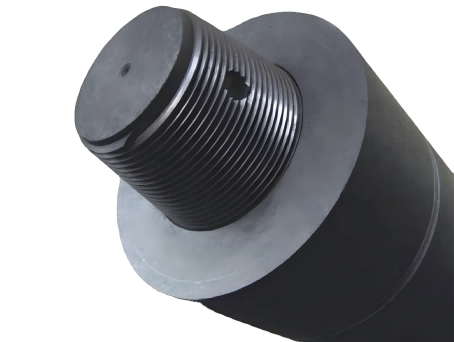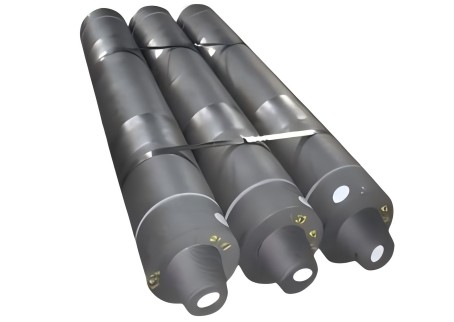HP Graphite Electrode
◐Graphite electrodes are high-temperature conductive materials made from petroleum coke and pitch coke as aggregates, with coal pitch as a binder. The production process involves calcining the raw materials, crushing and grinding, batching, kneading, forming, baking, impregnating, graphitizing, and machining.
Product Details
1.Introduction
Graphite electrodes are high-temperature conductive materials made from petroleum coke and pitch coke as aggregates, with coal pitch as a binder. The production process involves calcining the raw materials, crushing and grinding, batching, kneading, forming, baking, impregnating, graphitizing, and machining. These electrodes are referred to as artificial graphite electrodes (commonly known as graphite electrodes) to distinguish them from natural graphite electrodes made from natural graphite as the raw material.
2.Applications
Electric Arc Furnace Steelmaking: Electric arc furnaces are the primary users of graphite electrodes. In China, the output of electric furnace steel accounts for approximately 18% of the total crude steel production, with graphite electrodes for steelmaking comprising 70% to 80% of the total graphite electrode consumption. Electric arc furnace steelmaking utilizes graphite electrodes to introduce electric current into the furnace, generating a high-temperature heat source through the arc formed between the electrode tips and the charge for smelting.
Used in Submerged Arc Furnaces: Submerged arc furnaces are primarily used for producing industrial silicon and yellow phosphorus. In these furnaces, the lower part of the conductive electrode is buried in the charge material, forming an arc within the charge layer and using the heat generated by the resistance of the charge itself to heat the material. For high current density submerged arc furnaces, graphite electrodes are required; for example, approximately 100 kg of graphite electrodes are consumed to produce 1 ton of silicon, and around 40 kg are consumed to produce 1 ton of yellow phosphorus.
Used in Resistance Furnaces: Resistance furnaces include graphitization furnaces for producing graphite products, melting furnaces for glass, and electric furnaces for producing silicon carbide. In these furnaces, the materials inside serve both as heating resistors and as the objects being heated. Typically, graphite electrodes for conduction are embedded in the furnace head wall at the end of the resistance furnace, where these electrodes are not continuously consumed.
3.Specifications
Items | Classification | Unit | Nominal Diameter (mm) | ||
HP Graphite Electrode | |||||
200-400 | 450-500 | 550-600 | |||
Resistivity | Electrode | μΩm ≤ | 7.0 | 7.5 | 7.5 |
Nipple | 6.3 | 6.3 | 6.3 | ||
Bending Strength | Electrode | Mpa ≥ | 10.5 | 10.0 | 8.5 |
Nipple | 17.0 | 17.0 | 17.0 | ||
Young’s Modulus | Electrode | Gpa ≤ | 14.0 | 14.0 | 14.0 |
Nipple | 16.0 | 16.0 | 16.0 | ||
Bulk Density | Electrode | g/cm3 ≥ | 1.60 | 1.60 | 1.60 |
Nipple | 1.72 | 1.72 | 1.72 | ||
CTE(100℃-600℃) | Electrode | ×10-6/℃ ≤ | 2.4 | 2.4 | 2.4 |
Nipple | 2.2 | 2.2 | 2.2 | ||
Ash Content | Electrode | % ≤ | 0.5 | 0.5 | 0.5 |
Nipple | |||||
Recommended current load of HP Graphite Electrodes
Grade | Nominal Dia. | Allowable current A | Current density A/cm2 |
HP electrode | 200mm | 5500~9000 | 18~25 |
250mm | 8000~13000 | 18~25 | |
300mm | 13000~17400 | 17~24 | |
350mm | 17400~24000 | 17~24 | |
400mm | 21000~31000 | 16~24 | |
450mm | 25000~40000 | 15~24 | |
500mm | 30000~48000 | 15~24 | |
550mm | 34000~53000 | 14~22 | |
600mm | 38000~58000 | 13~21 |





